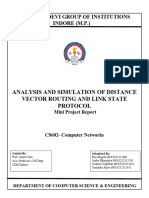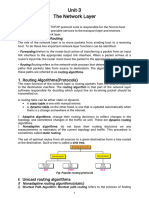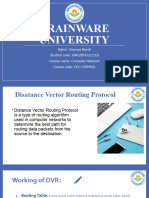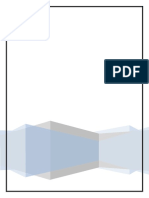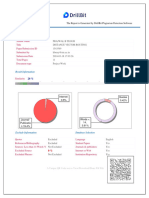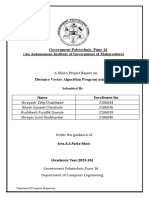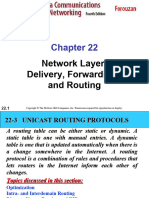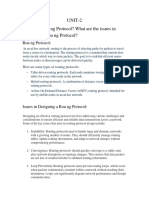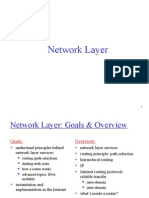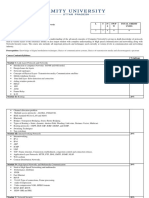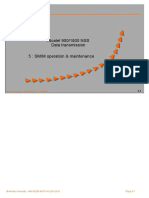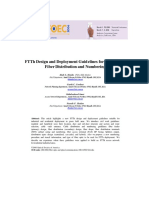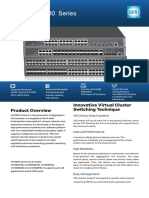0% found this document useful (0 votes)
91 views24 pagesNetwork Final Report
This project report summarizes a study comparing distance vector routing and link state routing protocols. The report includes an introduction to routing, distance vector routing, and link state routing. It describes the software used (NS2 network simulator), provides screenshots of simulations run, and analyzes the theoretical differences and performance of the two protocols based on the simulation results. The report concludes there are benefits to both approaches and future work could further evaluate their performance under different conditions.
Uploaded by
Parvaiz RainaCopyright
© © All Rights Reserved
We take content rights seriously. If you suspect this is your content, claim it here.
Available Formats
Download as DOCX, PDF, TXT or read online on Scribd
0% found this document useful (0 votes)
91 views24 pagesNetwork Final Report
This project report summarizes a study comparing distance vector routing and link state routing protocols. The report includes an introduction to routing, distance vector routing, and link state routing. It describes the software used (NS2 network simulator), provides screenshots of simulations run, and analyzes the theoretical differences and performance of the two protocols based on the simulation results. The report concludes there are benefits to both approaches and future work could further evaluate their performance under different conditions.
Uploaded by
Parvaiz RainaCopyright
© © All Rights Reserved
We take content rights seriously. If you suspect this is your content, claim it here.
Available Formats
Download as DOCX, PDF, TXT or read online on Scribd
/ 24
